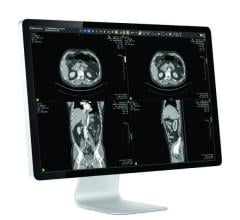
July 22, 2010 – Changes included in the final rules governing the meaningful use objectives for Medicare and Medicaid incentive programs for electronic health records (EHRs) will improve the odds that more providers can qualify for government stimulus funding.
The final rules, released last week, include flexibility that will give eligible hospitals and health care professionals a better opportunity to qualify for incentive funding in the early years of the program, according to an early analysis by the College of Healthcare Information Management Executives (CHIME).
CHIME, a 1,400-member professional organization based in Ann Arbor, Mich., is currently conducting a closer analysis of the final rule. It plans to produce a list of questions that need clarification for the final rule, and also produce guidance and support for its members and the industry at large.
While some portions of the 1,100 pages in final rules released last week still need clarification by the government, the early analysis of the final rule governing meaningful use indicates that the Centers for Medicare & Medicaid Services responded to some of the most significant concerns of those who commented on the proposed rule, which was issued in January, said Pamela McNutt, senior vice president and CIO at Methodist Health System and chair of CHIME’s Policy Steering Committee.
In particular, CHIME was pleased the final rules give providers some flexibility in choosing how to qualify for stimulus funding. The final rules include 14 core objectives for hospitals and 15 for eligible professionals; in addition to achieving those, providers generally must meet five other objectives from a menu of 10 additional objectives.
CHIME believes the flexibility in choice in the final rule provides more opportunity for providers to qualify for funding in the first years of the program. CHIME had voiced concerns about the preliminary rule, which laid out an “all or nothing” approach that would have required providers to meet all meaningful use objectives to qualify for stimulus funding.
Additionally, many of the compliance threshold levels for meaningful use objectives in the proposed rule were relaxed in the final rule. That will make it easier for health care organizations to be rewarded for their early efforts to use EHRs, which better reflects the early state of EHR adoption in this country, said David Muntz, CIO at Baylor Health Care System and Chair of CHIME’s Advocacy Leadership Team.
While encouraged by the relaxation in objectives for this first stage of the EHR incentive program, CHIME still views the Stage 1 objectives contained in the final rule as an aggressive target for the majority of the nation’s hospitals. Additionally, CHIME is predicting that many hospitals will have a difficult time qualifying for stimulus funding in subsequent stages of the incentive program, as meaningful use objectives increase in number and become harder to meet, and as other aspects of the stimulus program become more challenging.
CHIME also applauded the relaxation in requirements for reporting quality metrics. Reducing reporting requirements in the early years of the incentive program aligns industry responsibility with current capabilities of commercially available EHR systems and CMS’ own ability to receive quality data electronically.
CMS still needs to clarify some aspects of the final rule, including whether use of computerized provider order entry (CPOE) by a range of medical professionals will enable providers to meet the objective for CPOE usage.
CHIME also supports the inclusion of EHR usage in emergency departments (ED) as helping hospitals achieve meaningful use objectives. Because ED patients often become inpatients, the inclusion of ED records is consistent with the goal of improving quality across the continuum of care.
The final rule also puts limitations on states’ abilities to increase certification requirements for EHRs. That’s important for both vendors, which have to create the systems, and for providers that operate sites in more than one state.
CHIME continues to evaluate and seek clarification on all the implications of the regulation and will be issuing further analyses.
For more information: www.cio-chime.org


 March 06, 2024
March 06, 2024 



